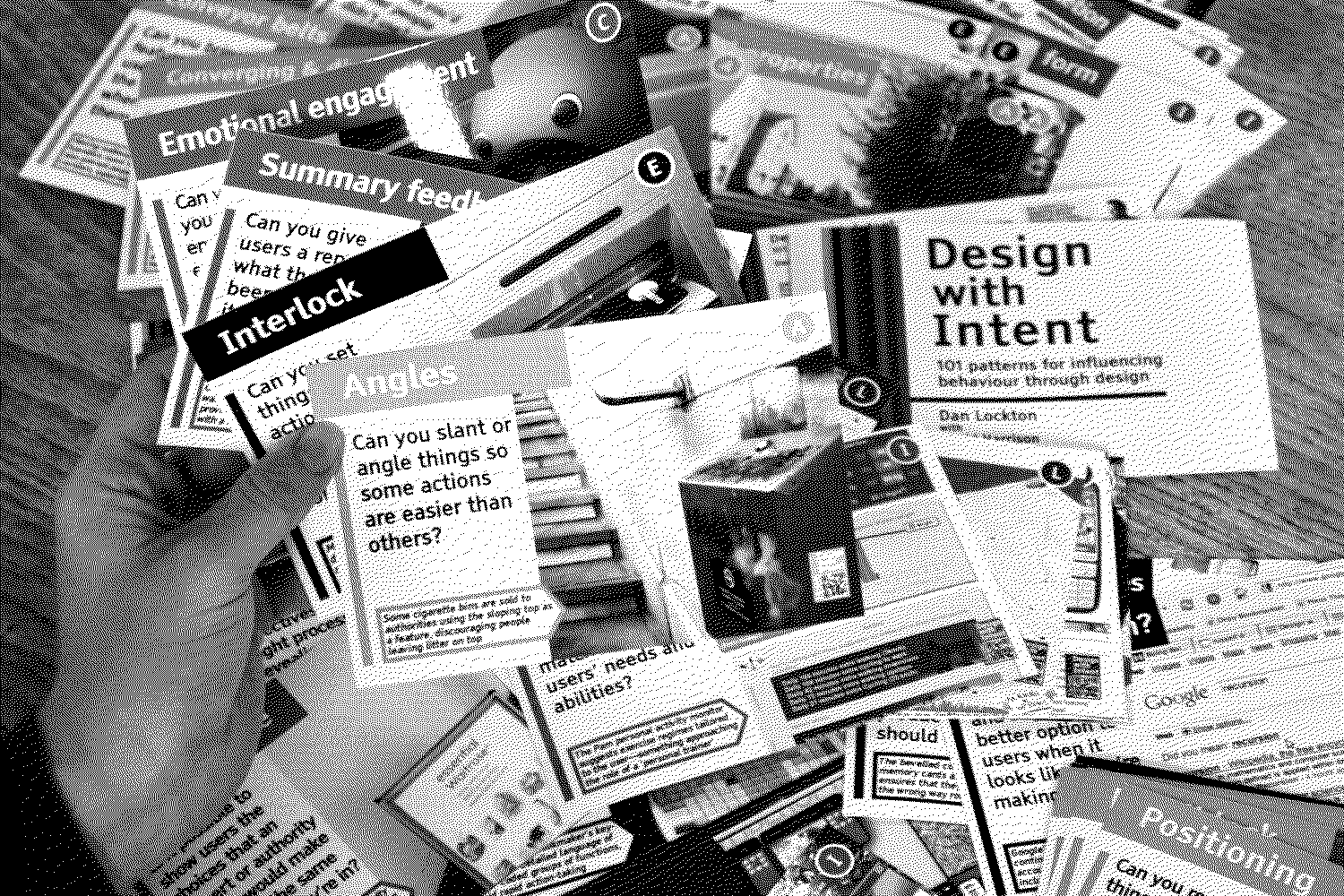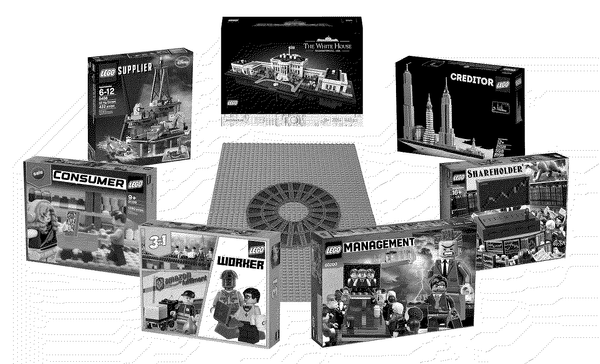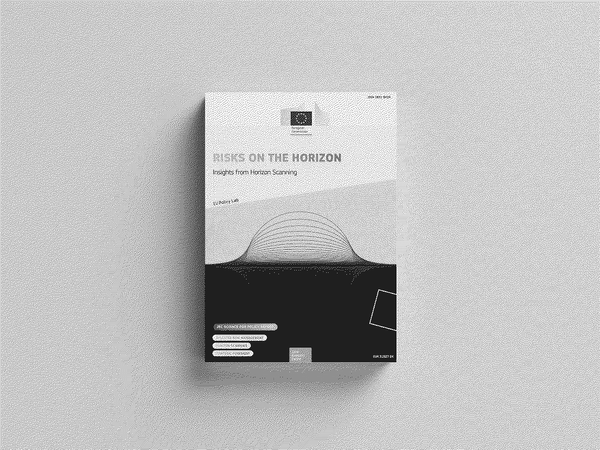Design With Intent
101 patterns for influencing behaviour through design, flashcards by Dan Lockton

Design shapes behavior, and as designers, we often overlook the influence we wield. It's inevitable, so we should master it and recognize when it's used on us.
The Design with Intent toolkit is a part of Dan Lockton PhD. And Over the years he has published a number of academic papers around the toolkit and the Design with Intent idea.
Following description comes from the downloadable toolkit pdf:
There’s a huge opportunity for design for behaviour change to address social and environmental issues, but as yet little in the way of a guide for designers and other stakeholders, bringing together knowledge from different disciplines, and drawing parallels which can allow concepts to be transposed. The Design with Intent toolkit aims to make a start on this task. The toolkit has evolved from an attempt at a very structured method for prescribing particular design features, to a loose concept generation tool, provoking design ideas by asking questions and giving examples of particular principles in action.
Structure of the toolkit
The cards are grouped into eight ‘lenses’ representing different disciplinary ‘worldviews’ or fields of research. Each lens has an introduction card which explains a bit more of the background. It’s a loose taxonomy and many cards would fit happily in other lenses: the point really is to encourage designers to think about behaviour change from different perspectives. Equally, the dividing lines between lenses are relatively fuzzy: if arranged as a series of segments as shown here, moving from each lens to the next clockwise or anti-clockwise only requires a small shift in thinking. The ‘environment‘ and ‘mind’ labels are tentative but reflect the general focus of the lenses, with those at the opposite corners involving most overlap.
The idea of design patterns, drawn from Christopher Alexander's work in architecture, has been adopted throughout programming and human-computer interaction. This latter context has influenced the form of Design with Intent, with a large dose of both TRIZ and IDEO’s Method Cards. However, the DwI cards are more like provocations — ‘Can you do this with your design?’.
Download it for free

https://imaginari.es/wp-content/uploads/2023/04/designwithintent_cards_1.0_draft_rev_sm.pdf





